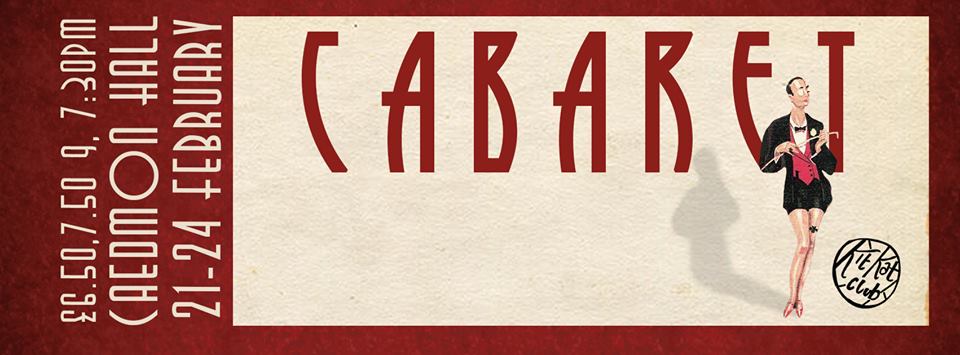We are both massive fans of Cabaret, as well as its ties to Christopher Isherwood’s Goodbye to Berlin. Between the two of us we poured over the show’s illustrious production history and literary background. We were inspired not only be various revivals of the show (including Sam Mendes’ Donmar Warehouse production and more recent Broadway productions), but also by historical links to Isherwood and the show.
For example, the gender-fluid work of German Weimar artist, Otto Dix, provided inspiration for the inclusion of drag and ambiguous sexuality in our production. In addition to the material itself, we were excited by the idea of tailoring Cabaret to Caedmon Hall, with nods to various other incarnations of the show.
Along with the impeccable eye of producer, Caroline Mosimann, we hope to provide an immersive experience for audience members with actual cabaret tables, Weimar decor, and champagne reception, enveloping them in the seedy indulgence of the Weimar Berlin scene through the fictional Kit Kat Klub.
Foregrounding our vision, we wanted to ensure that Cabaret was not conceived of as a ‘sexy’ production. It is often conflated with Kander and Ebb’s other musical, Chicago. But interchangeable, they are not. Cabaret is devoid of Chicago’s glamorisation. Instead, we hope to highlight something malevolent in our production.
Much of the subject matter of Cabaret is at odds with the vaudeville-esque, music hall sound of the show. With the expertise of our musical director, Rhys Rodrigues, we hope that the result unsettles audiences. Ultimately, the subject matter of the production, the mood of Kit Kat Klub, and the background tremors of Nazi Germany demand a seedy disquiet in their portrayal.
We wanted to experiment with a mood that was at once threatening, with unsettling undertones, yet ever-alluring. We would like the audience to take away from the production that blind hedonism, while pleasurable for a time, does not offer reprieve or escape. We want to invite the audience into a world which they become so immersed in they do not want to leave it, whilst illuminating the show’s graver undertones.
Voyeurism played a crucial role in our conception of Cabaret. We hope to achieve this by not only implicating the audience, but equally by placing leering Kit Kat performers and the Emcee in unexpected scenarios so as to unsettle the audience. Rosie Dart’s brazen choreography captures not only the sordid mood of the Klub and Weimar Berlin, but also discomforts the audience with confrontational, yet pointedly detached choreography.
Finally, while many audience members may be familiar with Bob Fosse’s film incarnation of Cabaret and Liza Minnelli’s Sally Bowles, we hope to return to the original source material which portrays Sally, not as an extraordinarily talented performer, but rather as a fragile, desperate character longing to be immortalized, but confused as to how to achieve this. Sally presents the façade of glamour but underneath lies a brittle person who is as confused as Clifford, if not more so.

